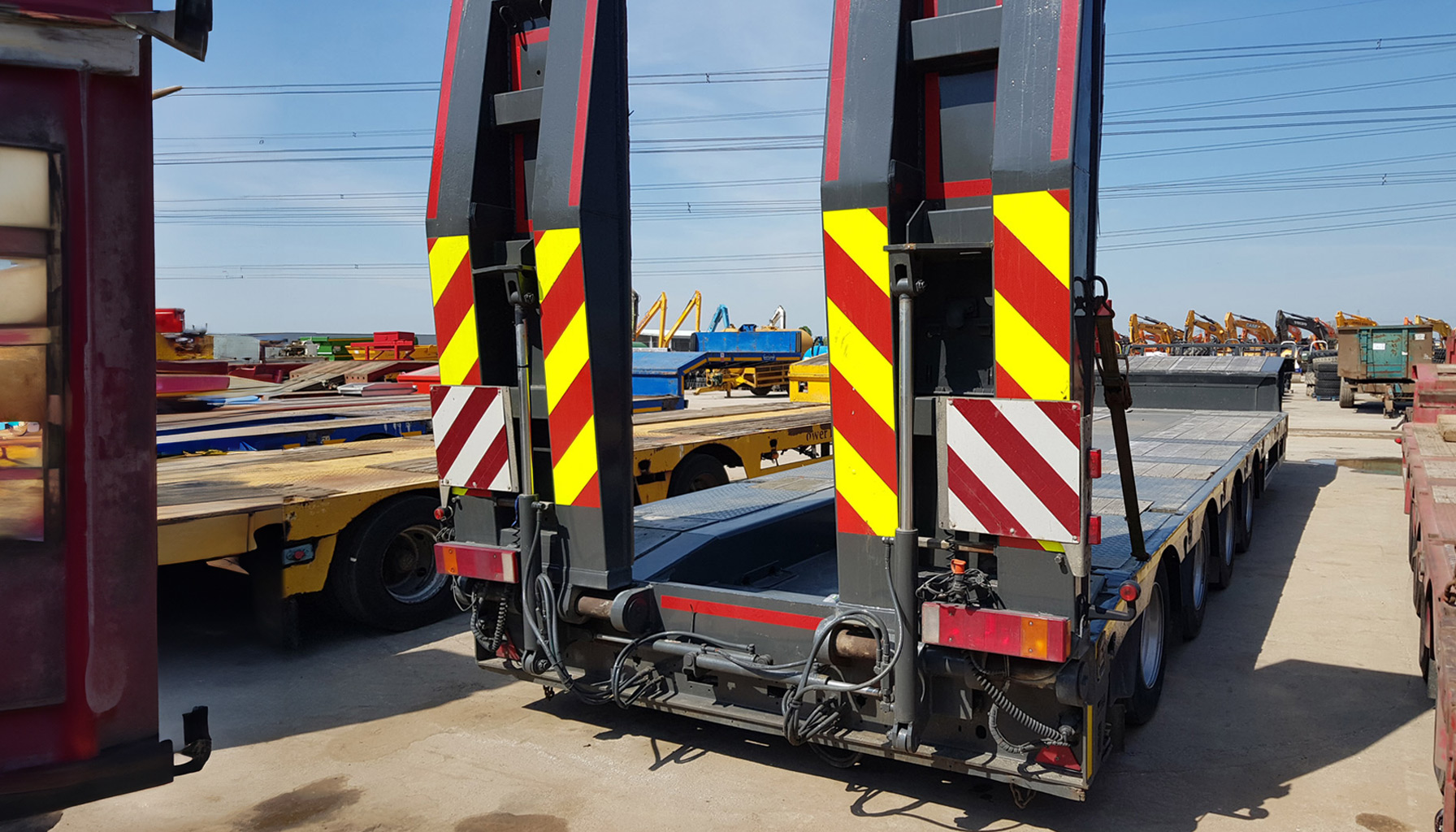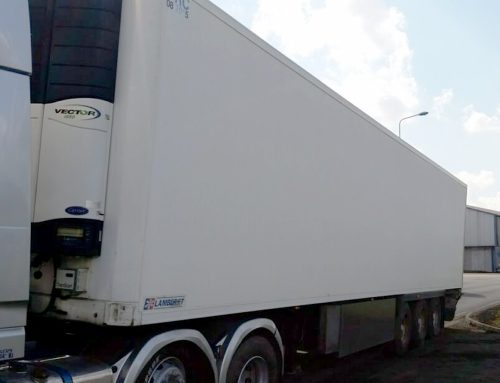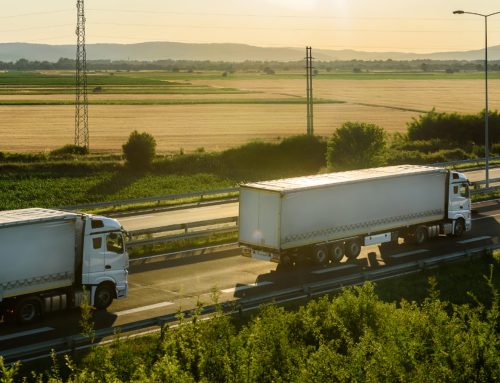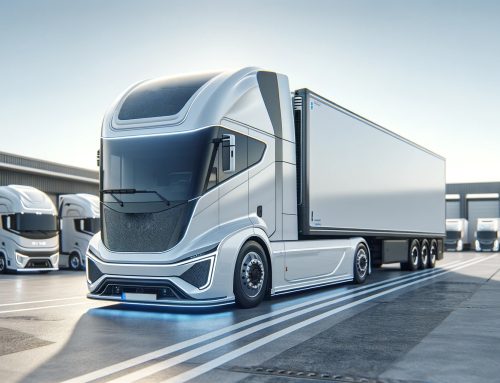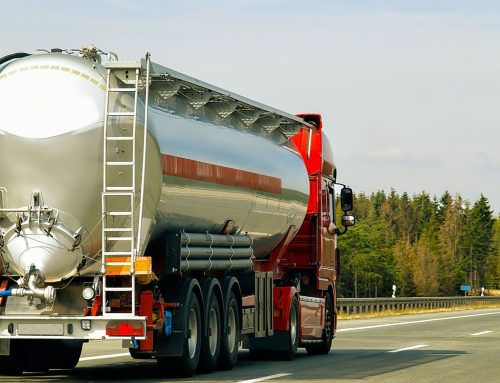With so many types of semi-trailers available, the terminology can be quite confusing at times. Whether you’re a seasoned haulier with your own fleet or a self-employed lorry driver gearing up for your first big shipment, understanding the key differences between each type of trailer is needed at times, especially if you are regularly talking to clients and associates across the pond. Let’s dive into two workhorses: the low loader and the flatbed – with a nod to how they’re viewed across the globe.
Transporting large or heavy goods is challenging at the best of times, but when you choose the right trailer for the task at hand, you can make life a lot easier, whilst also impressing your clients. While there are some similarities between low loaders and flatbed trailers, there are plenty of distinctive features we need to cover.
Flatbed Trailers
Flatbed trailers are loved across a multitude of industries because they make loading and unloading with a crane a breeze. From building materials to agricultural products, furniture, boats, cars, timber, steel beams and concrete pipes, these semi-trailers are highly sought after because they’re completely open (no sides and no roof), so operators have plenty of space to load and unload materials, while they don’t need protection from the elements.
With their level surface, flatbeds can be loaded quickly and conveniently with cranes or from the sides with forklifts and other hoisting equipment; however, there are also various extendable flatbed trailers for more particular requirements. We touched on these last summer when we detailed the fact that extended flatbed trailers can go up to to 29.7 m (98 feet) – these are available for longer loads and they provide the necessary flexibility to accommodate the length of abnormal loads.
With any large or bulky items, a flatbed is going to give you increased convenience, safety and rigidity than many other types, whilst playing a huge role in increasing loading times, especially when compared to enclosed trailers.
Low Loader Trailers
At times, you need to the perfect blend of space, accessibility, strength and safety – this is exactly what a low loader trailer can bring you. With a lower deck height than any other trailer, this type is specifically designed for heavy and oversized items, such as bulldozers, cranes, excavators, dump trucks and backhoes. As we touched on above, terminology does vary from one country to another. While Canadians may call these trailers low-beds and Americans may call them lowboys, we like to use the term low-loader here in the UK, where the maximum overall length for an articulated vehicle incorporating a low loader semi-trailer (not a step frame semi-trailer) is 18 metres. So what makes these trailers so popular across the world?
Ultimately, the load loader brings possibilities that other trailers simply can’t. The low deck is a huge win, making it far easier and less risky to load heavy machinery. These semi-trailers are also capable of carrying seriously heavy weight (a two-axle model can carry up to 18,000 kg, with a potential additional capacity of up to 36,000 kg). Being low to the ground is another big benefit for the haulier because they can clear typical height limits without the need for special permits.
Before opting for a low loader, it’s essential to check the necessary permits, as their requirements can vary based on the cargo and region. There are also many different types available, such as fixed gooseneck, fixed-neck, hydraulic detachable gooseneck, mechanically detachable gooseneck, and mechanical folding gooseneck. Essentially, there’s a type available for the heaviest cargo, so choosing the fight low loader can open up many new and exciting possibilities for your transport business.
Making the Right Choice
As much as we’d love to give you a clear winner, it’s impossible. It depends entirely on your needs, the nature of the cargo you transport, your budget and the regions you’ll be travelling through. That said, we can give you a few final tips before we wrap up. For general heavy items that do not exceed height limits, a flatbed is useful and offers more flexibility in loading options. However, for extremely heavy or tall equipment, a low loader offers plenty of strength and extra features to transport bulky goods safely and legally.
Whether you’re selling your trailer and looking for an upgrade, purchasing an entirely new trailer to expand your fleet or hiring a trailer, keeping some of these these key differences in mind can help you make an informed decision. Here at Trailer Trading, we buy, sell and export all types of semi-trailers, but when you sell directly to us, you don’t have to worry about your vehicle returning to the UK market – or worse, in the hands of your competitors. Selling to Trailer Trading protects your future contracts and allows you to take the next step, whether that’s scaling your fleet, moving with the times or entering new markets.

